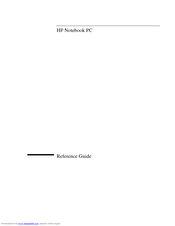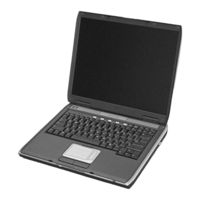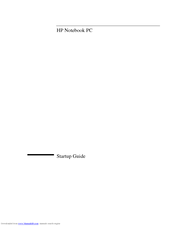HP Pavilion xt100 - Notebook PC Manuals
Manuals and User Guides for HP Pavilion xt100 - Notebook PC. We have 5 HP Pavilion xt100 - Notebook PC manuals available for free PDF download: Reference Manual, Service Manual, Startup Manual, Release Note, Information Note
Advertisement
Advertisement
HP Pavilion xt100 - Notebook PC Release Note (4 pages)
HP OmniBook XE4400: Release Note
HP Pavilion xt100 - Notebook PC Information Note (3 pages)
Sources of Information about the HP notebook computer and Windows
Advertisement




